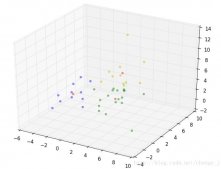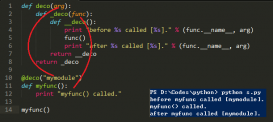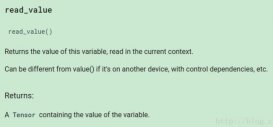动态图和静态图
目前神经网络框架分为静态图框架和动态图框架,PyTorch 和 TensorFlow、Caffe 等框架最大的区别就是他们拥有不同的计算图表现形式。 TensorFlow 使用静态图,这意味着我们先定义计算图,然后不断使用它,而在 PyTorch 中,每次都会重新构建一个新的计算图。通过这次课程,我们会了解静态图和动态图之间的优缺点。
对于使用者来说,两种形式的计算图有着非常大的区别,同时静态图和动态图都有他们各自的优点,比如动态图比较方便debug,使用者能够用任何他们喜欢的方式进行debug,同时非常直观,而静态图是通过先定义后运行的方式,之后再次运行的时候就不再需要重新构建计算图,所以速度会比动态图更快。
|
1
2
3
4
5
6
7
8
9
10
11
12
13
14
15
16
17
18
19
|
# tensorflowimport tensorflow as tffirst_counter = tf.constant(0)second_counter = tf.constant(10)# tensorflowimport tensorflow as tffirst_counter = tf.constant(0)second_counter = tf.constant(10)def cond(first_counter, second_counter, *args): return first_counter < second_counterdef body(first_counter, second_counter): first_counter = tf.add(first_counter, 2) second_counter = tf.add(second_counter, 1) return first_counter, second_counterc1, c2 = tf.while_loop(cond, body, [first_counter, second_counter])with tf.Session() as sess: counter_1_res, counter_2_res = sess.run([c1, c2])print(counter_1_res)print(counter_2_res) |
可以看到 TensorFlow 需要将整个图构建成静态的,换句话说,每次运行的时候图都是一样的,是不能够改变的,所以不能直接使用 Python 的 while 循环语句,需要使用辅助函数 tf.while_loop 写成 TensorFlow 内部的形式
|
1
2
3
4
5
6
7
8
9
10
11
|
# pytorchimport torchfirst_counter = torch.Tensor([0])second_counter = torch.Tensor([10]) while (first_counter < second_counter)[0]: first_counter += 2 second_counter += 1 print(first_counter)print(second_counter) |
可以看到 PyTorch 的写法跟 Python 的写法是完全一致的,没有任何额外的学习成本
以上这篇PyTorch学习:动态图和静态图的例子就是小编分享给大家的全部内容了,希望能给大家一个参考,也希望大家多多支持服务器之家。
原文链接:https://blog.csdn.net/qq_35447659/article/details/83898172












